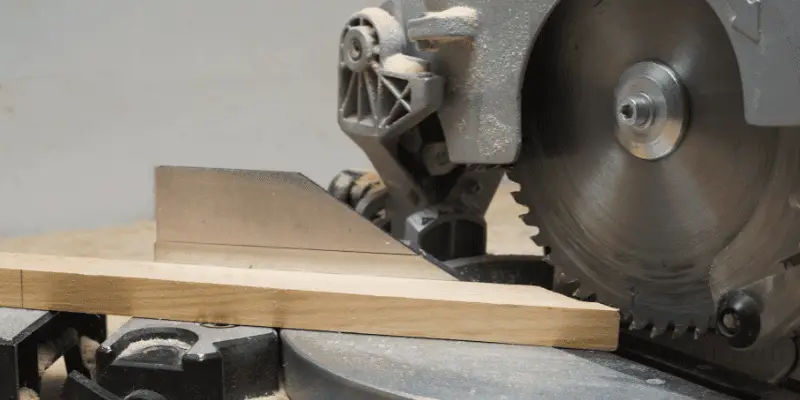Mitre saws are designed for making precise angled cuts, while circular saws are versatile for straight and curved cuts. Both saws have unique features and functions, making them suitable for different woodworking tasks.
The mitre saw’s stationary arm allows for accurate miter and bevel cuts, making it ideal for crown molding and picture frames. On the other hand, the circular saw’s handheld design offers mobility and flexibility, making it suitable for cutting large boards and sheet materials.
Understanding their differences and capabilities can help you choose the right tool for your specific project, ensuring efficient and precise results. We will delve deeper into the distinctions between mitre saws and circular saws to aid in your decision-making process.
Understanding The Key Differences
When it comes to woodworking and DIY projects, having the right power tools is essential. Two commonly used saws in the construction and carpentry industry are the mitre saw and the circular saw. While both tools are designed for cutting wood and other materials, understanding their key differences is crucial for choosing the right tool for your specific project needs.
Types And Functions
The mitre saw is a specialized saw designed for making precise angled cuts, typically used for trim work, crown molding, and other detailed woodworking tasks. It features a circular blade that is mounted on a swing arm, allowing the user to make accurate miter and bevel cuts.
On the other hand, the circular saw is a versatile handheld power tool that can be used for a wide range of cutting applications. It is perfect for straight cuts, cross cuts, and rip cuts on various materials, making it a go-to tool for framing, deck building, and general construction tasks.
Cutting Capacity And Flexibility
Regarding cutting capacity and flexibility, the mitre saw is designed for making cuts at specific angles and offers excellent precision for angled cuts. It excels in tasks that require accuracy and intricate detailing. However, the circular saw offers greater versatility as it can handle a wider range of cutting tasks, and its handheld nature allows for more flexibility in maneuvering through different workpieces and cutting angles.

Mitre Saw Features And Benefits
When it comes to woodworking and construction, the right choice of saw can make a significant difference in the accuracy and efficiency of the work. One of the most common dilemmas faced by DIY enthusiasts and professionals is whether to use a mitre saw or a circular saw for their projects. Understanding the features and benefits of a mitre saw can help in making an informed decision.
Accuracy And Precision
A key feature of a mitre saw is its ability to make precise and accurate cuts. Equipped with a built-in laser guide or LED light, mitre saws offer visual aids that ensure the cuts are on target with minimal margin for error. This feature is especially useful for tasks that require intricate and meticulous cutting, such as crown molding, trim work, and picture framing. The blade of a mitre saw also moves in a singular vertical motion, providing consistent and perpendicular cuts, resulting in a smooth and polished finish.
Angled Cuts And Bevels
Another advantage of a mitre saw is its versatility in creating angled cuts and bevels with remarkable ease and accuracy. Whether it’s cutting wood at a specific angle for joining pieces together or creating beveled edges for aesthetic purposes, a mitre saw excels in achieving precise and consistent results. The adjustable miter and bevel scales allow for quick and precise adjustments, making it an ideal choice for projects that demand meticulous attention to detail.
Circular Saw Features And Benefits
As a carpenter, choosing between a circular saw and a miter saw is an important decision. Each tool has its own set of features and benefits that make them suitable for different tasks. When it comes to circular saws, its versatility and blade options are key attributes that set it apart from a miter saw. Let’s take a closer look at the features and benefits of circular saws.
Portability And Versatility
A circular saw is favored for its portability and versatility. Unlike miter saws, which are stationary, circular saws can be easily transported to job sites. This makes them ideal for projects that require on-site cutting or for professionals who need to move between locations. The circular saw’s handheld design allows for more flexibility in maneuvering around large workpieces, giving users the freedom to make precise cuts from various angles.
Blade Options And Applications
One of the standout features of circular saws is the wide range of blade options available. Circular saw blades come in various sizes and tooth configurations, making them suitable for cutting different materials such as wood, metal, and plastic. This versatility allows users to tackle a diverse array of projects, from framing and decking to metal fabrication and masonry work. With the right blade, a circular saw can be adapted to handle virtually any cutting task, making it an indispensable tool for carpenters and builders.
Factors Influencing Your Choice
Factors influencing your choice between a mitre saw and a circular saw can heavily impact the success of your woodworking or construction projects. By considering the project type and scale as well as workspace and mobility concerns, you can make a well-informed decision that aligns with your specific needs.
Project Type And Scale
Before choosing between a mitre saw and a circular saw, it’s crucial to assess the scope and nature of your projects. Mitre saws are ideal for precision cuts in woodworking tasks, especially for making angled cuts for crown molding, picture frames, and trim work. On the other hand, circular saws are more versatile and efficient for cutting large sheets of material, making them suitable for general construction, framing, and outdoor projects.
Workspace And Mobility Concerns
Assessing your workspace and mobility needs can also influence your choice between a mitre saw and a circular saw. Mitre saws, being bulkier and generally requiring a dedicated workstation, are more suitable for a fixed workshop setup. In contrast, circular saws are more mobile and can be easily transported to job sites, making them a preferred choice for contractors and DIY enthusiasts who require on-the-go performance.
Frequently Asked Questions On Mitre Saw Vs Circular Saw
What Is The Primary Difference Between A Mitre Saw And A Circular Saw?
A mitre saw is ideal for making precise angle cuts, while a circular saw is more versatile and suitable for various cutting tasks.
Can A Circular Saw Be Used In Place Of A Mitre Saw?
Yes, a circular saw can be used for straight cuts and basic angle cuts, but a mitre saw offers better precision and accuracy for mitre and bevel cuts.
Which Saw Is Best For Cutting Large Boards And Sheets Of Plywood?
When dealing with large boards and plywood sheets, a circular saw is more efficient due to its ability to handle longer cuts and larger workpieces.
What Safety Precautions Should Be Taken When Using A Mitre Saw?
Always wear safety goggles and ear protection, keep hands away from the blade, and secure the workpiece properly before making any cuts with a mitre saw.
Conclusion
In the end, choosing between a mitre saw and a circular saw depends on your specific needs. Both tools offer unique features and benefits that can enhance your woodworking projects. Consider the type of cuts you need to make, the accuracy required, and your budget before making a decision.
Ultimately, selecting the right tool will help you achieve precise and efficient results in your projects.


